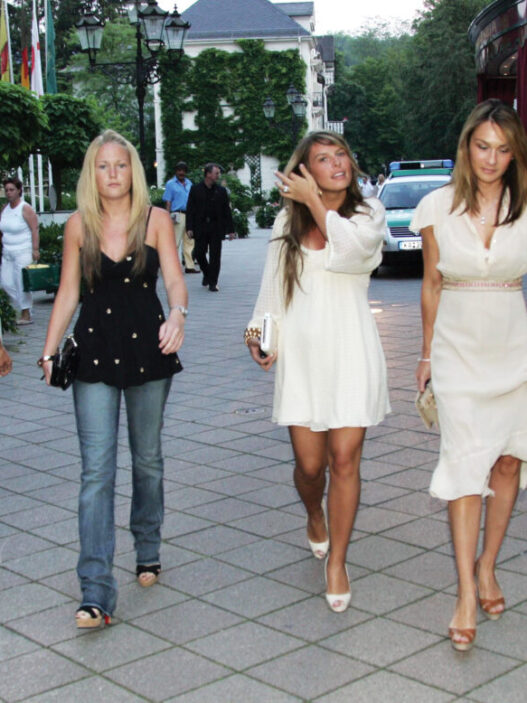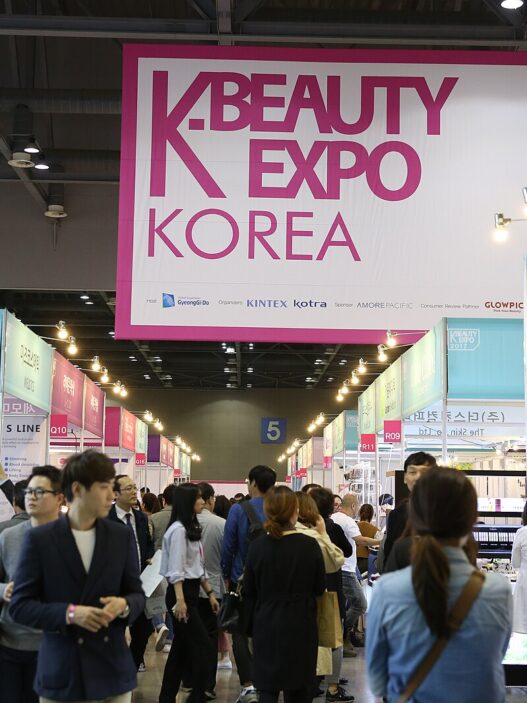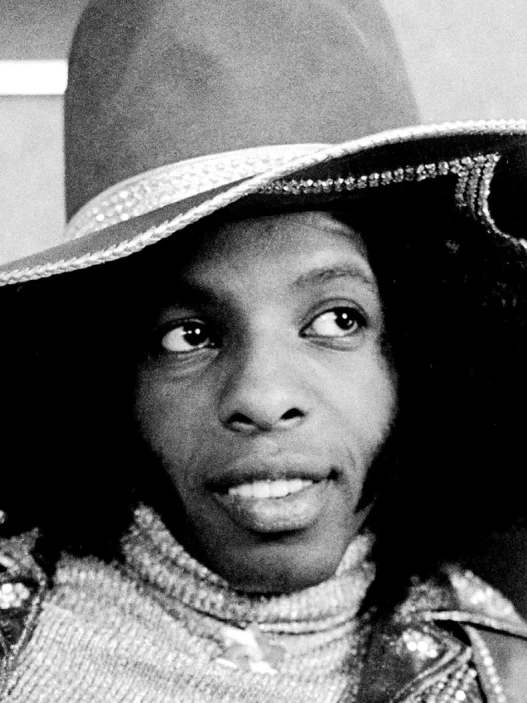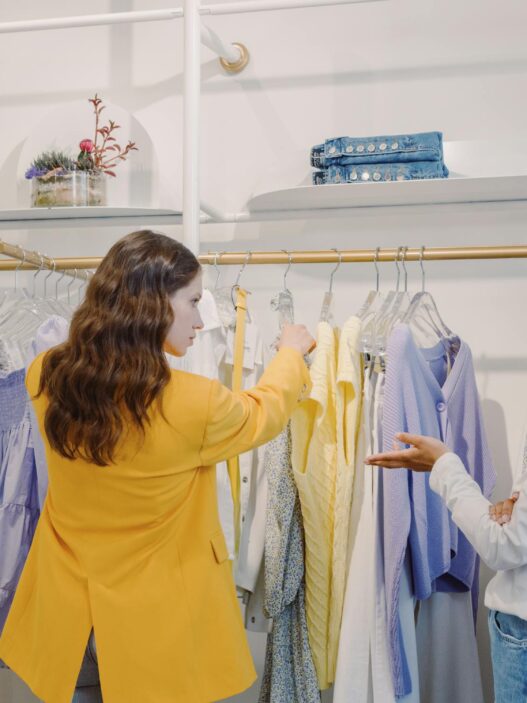Ever wonder how global politics can affect something as personal as your wardrobe? The answer often lies in tariffs, a type of tax imposed on imported goods. And the fashion industry, with its complex global supply chains, is particularly susceptible. Let’s explore how these tariffs work and what they might mean for your next shopping trip.
Understanding Fashion Tariffs
Tariffs are essentially taxes that governments place on goods coming into a country. They’re often used to protect domestic industries, generate revenue, or as a tool in international trade negotiations. In fashion, where materials and manufacturing frequently cross borders multiple times, tariffs can add up quickly. Think of cotton grown in the US, shipped to Vietnam for spinning into yarn, then sent to Bangladesh for garment construction, before finally arriving in your favourite European store. Each border crossing could potentially incur a tariff.
How Tariffs Impact the Fashion Industry Supply Chain
The fashion world relies on intricate networks. A single garment might involve raw materials sourced from one country, manufacturing in another, and final sale in yet another. Tariffs introduce friction into this process. They increase the cost of raw materials, manufacturing, and transportation.
Consider a brand like Everlane, which is known for its transparency. If Everlane sources cashmere from Mongolia and tariffs increase on goods entering the US, the cost of their popular cashmere sweaters will likely rise. Similarly, fast-fashion retailers like H&M, which are heavily reliant on efficient global sourcing, are vulnerable when tariffs change. They need to decide whether to absorb the added costs or pass them on to consumers.
The Direct Impact of Tariffs on Clothing Prices: Will Consumers Pay More?
The big question: Will tariffs make your clothes more expensive? The answer is complex, but leaning toward “probably.” Retailers face a tough choice. They can absorb the tariff costs, which cut into their profits. Or, they can increase prices, risking lower sales.
A 2019 study by the Peterson Institute for International Economics estimated that tariffs on Chinese goods could cost American consumers billions of dollars annually. While it’s tough to pinpoint the exact impact on individual items, higher tariffs generally translate to higher price tags, especially on goods with complex supply chains. Companies like Levi Strauss & Co. publicly stated that tariffs would negatively impact their earnings and might force them to raise prices.
Which Fashion Items Are Most Vulnerable to Tariffs?
Certain items are more exposed to tariff impacts than others. Clothing made with imported materials, like synthetic fabrics or specialised trims, is often a prime target. With its intricate construction and reliance on global component sourcing, Footwear is also highly vulnerable. Even accessories like handbags and belts can be affected, particularly if they contain materials like imported leather or hardware. Luxury goods, despite higher price points, can be impacted, as brands often rely on specialised materials from specific regions.
Strategies for Fashion Businesses and Consumers
So, what can businesses and consumers do? Fashion brands are exploring several options:
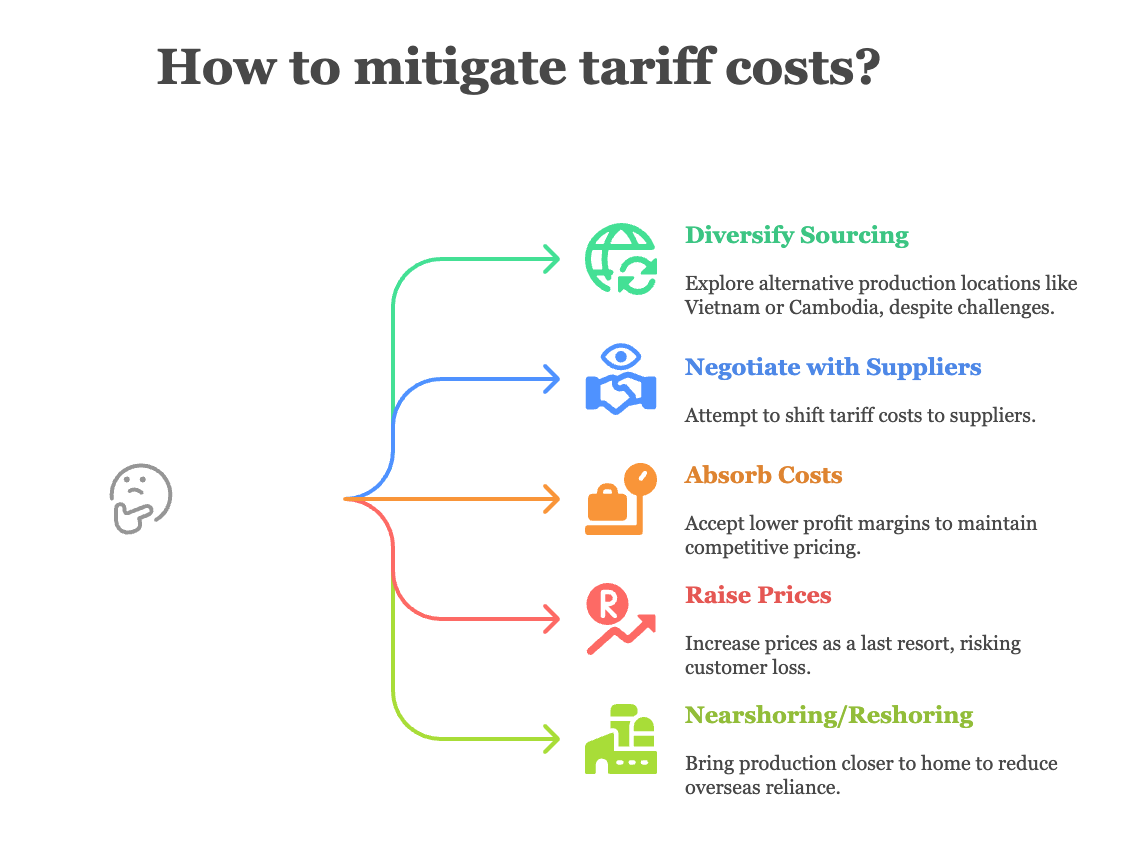
- Diversifying Sourcing: Moving production away from countries facing high tariffs. Vietnam, Cambodia, and India are popular alternatives, although they come with challenges like infrastructure limitations and rising labour costs.
- Negotiating with Suppliers: Pressuring suppliers to absorb some of the tariff costs.
- Absorbing Costs: Accepting lower profit margins, especially for highly competitive items.
- Raising Prices: This is the least desirable option, but sometimes necessary.
- Nearshoring/Reshoring: Bringing production closer to home to reduce reliance on overseas sourcing.
As consumers, we can:
- Shop Wisely: Be mindful of where your clothes are made and consider supporting brands with more localised supply chains.
- Invest in Quality: Buy fewer, better-made items that will last longer, reducing the need for frequent replacements.
- Embrace Secondhand Fashion: Explore thrift stores and online marketplaces for pre-owned clothing. Circular fashion models avoid tariffs altogether.
The Global Economic Implications of Fashion Tariffs
Beyond individual price tags, tariffs can have broader economic consequences. They can disrupt global trade flows, lead to retaliatory tariffs from other countries, and increase business uncertainty. This can slow economic growth and lead to job losses in some sectors. The legal challenges to tariff implementation can also create uncertainty and delays. Industry lobbying efforts try to influence government policy in this area, but with varying success.
Future of Fashion and Tariffs: Trends and Predictions
The future of fashion and tariffs is uncertain. Geopolitical tensions and trade policies are constantly shifting. We can expect to see brands continue to adapt by diversifying their supply chains, investing in automation to reduce labour costs, and focusing on sustainability to appeal to increasingly conscious consumers. While it’s unlikely tariffs will disappear entirely, understanding their impact empowers businesses and consumers to make informed choices.










